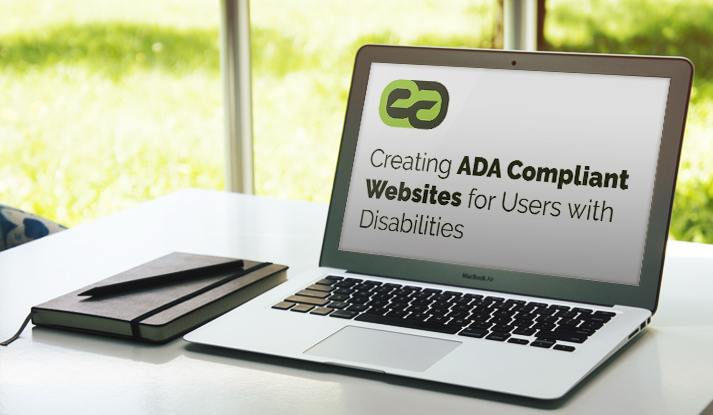
Creating ADA Compliant Websites For Users With Disabilities
The American government signed the Americans with Disabilities Act into law in 1990. It aims to protect the rights of the disabled Americans by preventing discrimination against them and at the same time guarantee that they can have equal opportunities in the American society.
The signed law includes the equal opportunity when engaging with online activities. Persons with disabilities often find it difficult to access websites that are not properly optimized according to their needs. Website owners should consider the following in order to create a site that should be able to cater to the needs of the persons with disabilities:
- The number of people in America that have disability is approximately 54.5 million, which is about 18.7% of the world’s population.
- At least 53% of the seniors, with age 75 and up, have disability. As more people get older, expect the number to grow.
- The most common disabilities are visual impairment, physical limitations like difficulties in using a mouse and computer keyboard.
- Furthermore, it is also important to think about those with autism or other mental disabilities. These people might have some difficulties in dealing with visual effects or adding elements.

The Right Time to Create an ADA Compliant Website
There tend to be several scenarios or circumstances that businesses must face frequently, and creating an ADA compliant website is an option that must be seriously considered or discussed. If you are facing a dilemma whether it’s the right time to turn your website into one, then take a look at some of the most cited reasons or situations that force website owners to turn their websites into ADA compliant sites. Understand that the list below is not comprehensive, there could be other reasons.
- Do you see the ADA compliant website as the solution in improving the work efficiency in your organization? Do you think that it could really help a lot?
- Does your business or company have Corporate Social Responsibility (CSR) policy that compels you to provide an ADA compliant website?
- Is your target audience or client mostly disabled or impaired?
For the Visually Impaired Users
People who need to deal with visual impairment (those with limited scope of vision or total loss of sight) simply cannot handle an interface as easy as the non-challenged users. The blinds are not the only ones who experience hardships in dealing with the website’s visuals, even some of the usual users have trouble reading a particular font style, size, or color.
Solution: Avoid Dictating the Font Colors and Settings
The primary reason that users set their preferred font color and size in their browsers is to create ease and comfort when they surf the net. You need to design your website in such a way that it follows the font color and size in the user’s operating system and web browser. The user with poor vision must be able to clearly see the content of the page he or she is visiting. The color of the background as well as the texts should be easy on the eyes.
The first blind engineer of Facebook continues to make headlines when he created an amazing tool that can help visually impaired Facebook users and let them use the popular social platform with ease. The new program shares everything to the visually impaired Facebook user though audio or mechanical voice in describing a friend’s shared photograph. The mechanical voice (using artificial intelligence) identifies the broad, yet crucial elements of the photograph. This helps the user a lot in visualizing what is shared with him or her. The technology aims to help those with disabilities somehow participate in the online communities with ease.
For the Users with Hearing Disability
There are more and more websites that include video content, but the valuable information that the video contains may not reach a portion of the site audience. The individuals with hearing impairment won’t be able to appreciate the information that the video gives or any audio guides for that matter.
Solution: Make Sure to Provide a Transcript of the Video
Providing a transcript of the video is a big help for someone with a hearing disability, and it is also good for SEO.
For the Physically Challenged Users
Physically challenged users experience difficulties in handling computer keyboard and navigating a mouse. This can be a big problem when the user needs to answer a call-to-action, click a button, or encode needed details. The user’s limited use of his fingers and hands can pose problems in clicking an item, especially if it’s too small or close to the other clickable items.
Solution: Create Simplified Pathways for the User
Larger call-to-action button and adequate space between the interactive elements are great help for physically impaired users. You can create a wider range for clickable item so the physically impaired person can easily click the button without trouble.
For Users with Cognitive Impairment
People with cognitive difficulties such as autism as well as dementia or brain injuries, issues with layout and design, and problems with navigational structure may find it difficult to use a site that is not ADA compliant. Too many design elements or site functions could increase the stress levels of users with cognitive impairment.
Solution: Make Things Simple
Making things simple for your website should always be the goal, and keeping everything simple and easy to understand is important for users with cognitive difficulties. It is best to limit the number of available choices, present solid and narrow decision structure for the users, and avoid making the user do simultaneous tasks.
The ADA Compliant Website Design
When you design your ADA compliant website, it is important to follow the guidelines to the dot and at the same time, you need to take into consideration the implication of the project to your business. Consider the business’ needs, objectives, and other pertinent matters. You need to ask:
- Will the website design be able to meet the internal requirements?
- What are the possible limitations with your design if there are any? What about the content types?
- Do you have the financial capability to complete the project and then test it afterwards?
It is critical to remember that creating an ADA compliant website requires careful planning, effective design, systematic development, and quality assurance. The time range for the project completion and the cost can go beyond your regular website design due to additional:
- Considerations on usability
- Limitations of font and color
- Requirements for coding
- Testing and quality assurance
- Considerations regarding the content
Alignment of ADA and SEO
SEO still plays a significant role in today’s online business growth. It is interesting to know and take a closer look at how the SEO best practices and ADA compliance are aligned. Search engines give the top ranks to web pages that offer the best value and experience to web users, it should not be surprising to know that the ADA compliant guidelines and the best SEO practices mirror each other. Consider the following:
- It is important that all images have alt text
- The links should include text description
- All videos must have text descriptions
- The PDFs must also be made available in HTML format
- For the forms, it is important to use graphic ghost text
Fundamental Considerations
When creating an ADA compliant website, it is imperative to think about the possible disabilities of the users who will visit the website. Below is a simple checklist and guide that can help you with your business’ site:
- Provide an alt tag for each image, video or audio file, and plug-in.
- Opt for detailed text descriptions for complex graphics.
- Make sure that the alt descriptions clearly describe the purpose of the objects.
- If you need to use the image as a link, then your alt tag must describe the graphic as well as the link destination.
- It is recommended to incorporate captions on videos.
- There should be transcripts and audio descriptions.
- It is better to create a link to the video than to embed it in your website pages.
- Data tables should have tags that properly identify the column and row headers.
- Table cells should be linked with fitting headers.
- Make sure to include the link to a disability-accessible page that contains a downloadable plug-in.
The ADA has provided a checklist as a guide to the planning process and decision making. Additional institutions also provide other guidelines that can help ensure that the websites are accessible, including the Web Content Guidelines. Take note that there’s no monitoring body that screens the websites regularly and see if they meet the requirements. It is up to you to make sure that your website can provide the ease of access that each user demands.

